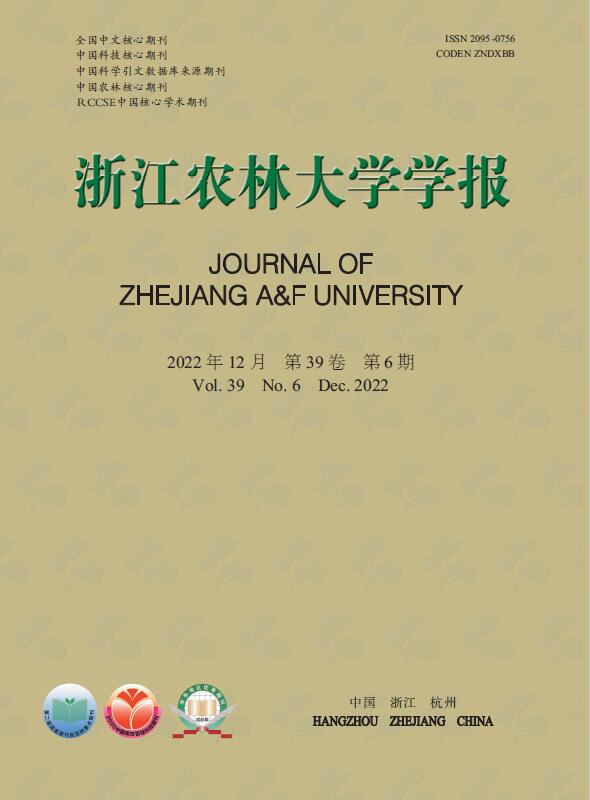-
土壤盐渍化作为植物生长的非生物胁迫因素,严重限制了农作物的生产和经济的可持续发展,是近几十年来持续扩大的世界性农业问题[1−2]。据估计,全球超过9亿hm2的土地受到盐渍化影响,大约为全球灌溉土壤的1/3,此外,受盐渍化影响的土壤表面积每年增加约1%~2%[3]。土壤的特性之一就是在空间和时间上并不是匀称的质体,是一种持续的时空变异体,具备高强度的时空异质性[4−5],这就是土壤的时空变异性。土壤盐分在土壤剖面层的这种变异性会引起植物生长以及耐盐力的变化。
关于盐分对植物的危害以及植物耐盐机制的研究已有很多,集中在形态特征、生理生化以及分子机制方面。特别是近些年来,随着分子生物学的发展,在基因组成、表达调控及信号转导等分子水平上探讨植物潜在耐盐机制的相关研究[6−7]不断增加。但是这些植物的耐盐性研究大多是在均匀盐分含量下进行的,在异质盐胁迫下的相关研究较少。然而,土壤盐分的空间分布是高度可变的[8−9],即使在单个植物的根际,盐分含量也可能发生很大的变化[10],这种土壤盐分的不均匀性对植物能否在盐碱地生长有很大的影响。因此,深入了解植物在异质盐胁迫下的响应模式对盐碱地作物生产具有重要的意义。鉴于此,本研究综述了土壤盐分空间异质性的成因以及植物对土壤空间异质性分布的响应,以期为未来土壤异质性的相关研究提供参考。
-
自然界中土壤的形成过程包括化学过程、物理过程和生物过程。母质是土壤的物质基础,它是各种岩石风化的产物,不同的母质由于风化程度不同所形成的土壤颗粒大小也不同,对土壤的理化性质有很大的影响。土壤性质不仅受气候、母质、季节等环境因素的影响,同时也受到施肥、灌溉等人为因素的影响,因而形成了各种类型的土壤。不同的土壤之间存在明显的差异,这种差异称为土壤的空间异质性[11]。即使同一类型的土壤在不同的时间和空间中,土壤性质也可能存在显著的差异,其中土壤的养分、水分以及盐分的异质性尤为明显。
土壤质地决定了土壤毛细水上升的高度和强度,间接地影响了土壤盐分的空间分布。一般来说,质地黏重的土壤盐分淋洗效果较差,很容易导致土壤盐分的累积,而且,黏土不仅会阻碍水盐上升,也会影响水分的下渗;砂土的持水性较差,更有利于水分向深处渗透,但在蒸发量较大的季节,盐分也更容易随水分蒸发在土壤表面聚积[12−13]。除此之外,受水盐运动方向的影响,同一地区,地势高的土壤盐分含量明显高于地势低的土壤盐分;植被覆盖的土壤和裸地相比,等距离内植被覆盖地的盐分含量变化要远小于裸地。
土壤中水分的运动和蒸发是导致土壤盐分空间异质性的主要原因[13]。研究表明:土壤中盐分的运动必然伴随着水分的运动[14−15],例如降水后土壤表面发生的水分蒸发,会导致盐分在土壤表层累积,以及根系吸水引发的土壤水分入渗,造成盐分也随之向下迁移,而过度灌溉则容易形成浅层地下水,水分和离子很容易伴随着水分蒸发从浅层土壤中移动到土壤表面,且当盐分溶解度达到饱和后,部分盐离子容易被土壤中的固体基质所吸附,发生沉淀,进一步导致土壤盐分的不均匀分布[16]。
除了受到外界多重因素的影响,植物本身对水盐吸收的特定规律,也会导致植物周围盐分分布不均匀。植物根系在吸收水分的时候,会过滤掉部分盐离子,将盐离子排除在根系表面[17],所以土壤盐分空间异质性是各种因素长期作用的综合结果。
土壤的盐分分布在空间上呈现出块状分布[18],且在一个相对较小的范围内就会产生明显的盐分梯度,在1 m的距离内有些土壤的电导率甚至可以从几十到几百的大幅度波动,如在垂直距离小于1 m的湿地中,垂直方向的电导率可达68~250 dS·m−1[19];盐碱滩垂直方向的电导率则为70~214 dS·m−1[20];甚至在灌溉农田中小于10 m的距离中,电导率的水平波动也能达0~24 dS·m−1[21]。相关研究[22]认为:盐生植物能够在土壤盐分含量比海水高几倍的地区出现,部分盐生植物和非盐生植物能够在盐分含量远超出植物生长范围的半干旱区的盐碱地以及盐碱地表层的沼泽中生存,关键就在于植物的根系可以向浅层地下淡水处延伸来吸收含盐量较少的浅层地下淡水,并在植物体内通过水分的再分配来满足植物生长的水分需求[21, 23],这表明土壤盐分的固有变异性在含盐量较高的土壤中对维持植物生长起着重要作用,因为在实验中均匀施加这种盐分通常会严重抑制植物生长甚至死亡[24]。
-
关于土壤空间异质性对植物生长的影响,WEAVER等[25]利用蜡膜(植物根系可以轻易通过,但是水不能通过)对植物根系所在的土壤进行分层,研究了在不同植物(燕麦Avena sativa、大麦Hordeum vulgare、玉米Zea mays等)土壤在不同发育阶段的水分养分吸收情况。随后,HUNTER等[26]使用了类似的方法在水平方向研究了淡水和盐水灌溉对植物生长的影响。LUNIN等[27]利用石英砂作为隔层,代替蜡膜进行了玉米和番茄Lycopersicon esculentum的水平不均匀盐胁迫试验发现:与对照相比,水平不均匀盐胁迫(植物1/3的根系处于高盐盐分的土壤中时)对玉米和番茄的生长无明显的影响,甚至当2/3的根系处于高盐分的土壤中时,对其生长的影响也很小。BINGHAM等[28]在这个基础上研究了垂直不均匀盐胁迫对玉米生长的影响,研究结果和水平不均匀盐胁迫类似,当玉米1/3的根系处于盐渍化(电导率为12 dS·m−1)的土壤中时,反而促进了植物地上部的生长;当玉米2/3根系处于盐渍化土壤中时,与对照相比生长只减少了10%,但是当玉米根系处于完全盐渍化的土壤中时,玉米的生长却降低了30%,根系生长减少了50%,与均匀的高盐胁迫相比,玉米在部分根区受到盐胁迫的伤害要小得多,这也是早期比较完整的空间异质盐胁迫对同一植物影响的研究。同时KIRKHAM等[29]提出了植物对3种盐分分布情况的响应可能相同:①当盐分随垂直方向变化时,②当盐分随着水平方向变化时,③根区某一部分的土壤盐盐分随时间和空间变化时。与均匀盐胁迫相比,植物在异质盐胁迫下能够生长更好,是因为异质盐胁迫降低了根区的平均盐分,这个结果与BAZIHIZINA等[8, 30]对大洋洲滨藜Atriplex nummularia的研究相吻合。
与均匀盐胁迫相比,异质盐胁迫能够促进植物的生长,缓解盐胁迫。如ZEKRI等[31]研究表明:用氯化钠(NaCl)或者聚乙二醇(PEG)调节营养液的渗透势来创造酸橙Citrus aurantium根系两侧不一致的盐分含量,结果发现:与两侧用相同盐分含量的水浇灌相比,只浇灌一侧盐水的酸橙地上部干质量增加了40%~76%,并且两侧根系均用−0.20和−0.35 MPa营养液处理的酸橙随着胁迫时间的延长部分叶片会有烧伤,但是其他处理并没有出现这种现象。KONG等[32]通过嫁接建立了一个新的分根系统来研究棉花Gossypium hirsutum对不均匀盐胁迫的响应,在总盐为0.20 mol·L−1的NaCl胁迫中,与无盐胁迫的处理相比,根系两侧均用0.1 mol·L−1NaCl溶液浇灌的棉花地上部鲜质量下降了24.3%,干质量下降了31.7%;而一侧根系用0 mol·L−1NaCl溶液浇灌,另一侧用0.20 mol·L−1NaCl溶液浇灌的处理与一侧根系用0.05 mol·L−1NaCl溶液浇灌,另一侧用0.15 mol·L−1NaCl溶液浇灌的处理中,地上部鲜质量分别下降了8.5%和15.8%,地下部干质量分别下降了12.8%和22.9%。对葡萄 Vitis vinifera进行4个月的盐胁迫发现:在一侧根系用0 mol·L−1NaCl溶液,另一侧根系用0.08 mol·L−1NaCl溶液的处理中,地上部的生物量是对照的55%,同浓度均匀盐胁迫的地上部生物量只有对照的5%。但是在盐敏感植物辣椒Capsicum annuum[33]的研究中出现了不同的生长情况,当辣椒根系所在的盐溶液电导率为8 dS·m−1时,异质盐胁迫与均匀的盐胁迫相比,并没有减轻盐胁迫对植物生长的影响。在同为盐敏感植物的黄瓜Cucumis sativus[34]研究中,当一侧根系营养液的电导率为6 dS·m−1时,另一侧为正常营养液的不均匀盐胁迫或均匀盐胁迫都会严重抑制黄瓜的产量。然而,盐敏感植物番茄根系的一半受到高盐胁迫(电导率为13 dS·m−1)时,地上部生长和对照相比仅减少了14%[35]。MULHOLLAND等[36]在番茄根系所处营养液的电导率为8 dS·m−1时,也发现了类似的现象。SONNEVELD等[37]、TABATABAEI等[38]通过增加番茄所需营养元素的含量,调节营养液的电导率,从而产生一定的盐胁迫,即当番茄一侧根系所处的营养液电导率较高,另一侧电导率较低的情况下,番茄的生长会随着较低一侧营养液电导率的增加而下降。综上所述,与均匀盐胁迫相比,异质盐胁迫能够缓解盐害对植物地上部生长的影响,但是植物的种类、盐分含量以及组成都会影响植物对异质盐胁迫的响应。
-
根系是植物主要的营养器官,主要负责从土壤中吸收并运输水分和无机盐等营养物质,也是土壤中盐胁迫发生时最先感知并作出反应的器官。在植物生长发育过程中,植物根系为了能够维持自身生长所需,会在养分和水分相对丰富的区域繁殖更多的根系,以补偿根系在水分或养分匮乏地区受到的生长抑制[39]。相对于均匀盐胁迫,不均匀盐胁迫可以通过处于较低盐分含量一侧根系的补偿性生长,部分或者全部抵消处于较高盐分含量一侧被抑制的根系生长量,从而缓解盐胁迫对植物地上部生长的抑制[8, 40]。相关研究指出:非盐生植物能够生长在盐碱地表层的沼泽中,是因为植物可以通过吸收地下水层的淡水来维持植物生长,说明植物在受到盐胁迫后可以通过根系向淡水层延伸来吸收淡盐水和养分以缓解这种伤害[24]。KIRKHAM等[29]研究表明:在不均匀盐胁迫下,植物可以在盐含量较低的区域繁殖大量的根系来补偿盐含量较高区域对植物根系生长的抑制。这一结论在小麦Triticum aestivum的研究中被证实,在非盐生植物小麦的不均匀盐胁迫处理下,无盐胁迫一侧的根系中发生了根系的补偿性生长,且无盐胁迫一侧的根系生物量比高盐侧增加2倍以上,和均匀盐胁迫相比显著缓解了盐胁迫[40]。在玉米[28]、酸橙[31]、番茄[41]、紫花苜蓿 Medicago sativa[42]的部分盐胁迫处理中,均发现了低盐侧根系的补偿性生长。同样的结论在盐生植物大洋洲滨藜[30]中也被发现,虽然一侧根系在0.01 mol·L−1的NaCl溶液中,另一侧在0.67 mol·L−1的NaCl溶液中,大洋洲滨藜两侧的根干质量并没有受到明显的影响,也未出现根系的补偿性生长,但是,与对照相比,一侧根系处于0.10 mol·L−1的NaCl盐溶液,另一侧处于1.50 mol·L−1的NaCl盐溶液的极端不均匀盐胁迫处理中(在均匀的1.50 mol·L−1的NaCl盐溶液下,植物的根系已经停止生长),低盐侧根干质量增加了40%,猜测可能是0.67 mol·L−1的NaCl胁迫在大洋洲滨藜的耐盐范围内,但是1.50 mol·L−1的极端盐含量超过了植物的忍受范围,所以盐含量较低的一侧根系进行了一定的补偿性生长。除此之外,在盐生植物枸杞Lycium chinense的研究[43]中发现:异质盐胁迫下,枸杞高盐侧的根系生长受到抑制,但低盐侧繁殖了大量的细根,促进了植株地上部的生长,且根系两侧的盐分含量差异越大,根系的补偿效应越明显。以上结果说明根区的这种补偿性在异质盐胁迫中是普遍存在的。
为了验证和探明根区这种补偿性生长的分子机制,KONG等[44]在棉花不均匀盐胁迫生理反应的基础上,对棉花RNA测序结果分析发现:与不含NaCl的对照相比,在盐胁迫6、12和24 h下,吲哚乙酸(IAA)在异质盐胁迫处理的非盐侧根中增加了15.4%、17.3%和25.3%,而在高盐侧的根系中分别减少了14.3%、13.7%和12.7%。XIONG等[45]对紫花苜蓿不均匀盐胁迫响应的研究中也发现:大多数IAA相关基因和赤霉素(GA)相关基因在非盐侧的根中上调(IAA主要参与细胞伸长的调节[46],而GA通过细胞伸长促进植物生长[47]),在高盐侧的根中下调,这可能是低盐侧根系在非均匀盐胁迫下发生补偿性生长的一个重要原因。
盐胁迫下根系形态结构变化的研究[48]表明:植物为了缓解盐害带来的影响,根系向土壤深处迁移,远离因裸地蒸发而高度盐渍化的土壤表面,同时通过增加低盐区根系的体积以及高密度的根系,来降低根系分布区域的平均盐分含量,使植物能够吸收盐分较低区域的水分和养分,以弥补盐渍区带来的吸水速率的降低。
-
在盐渍化土壤中,土壤渗透势过低会使植物难以吸收土壤中的水分,植物通常通过降低地上部叶片水势来吸收生长所需的水分,所以当植物根系暴露于不均匀的盐分环境时,水分利用策略会发生变化[49−50]。研究表明:在异质盐胁迫下,整个植物的吸水量高于均匀盐胁迫的吸水量,并且更多的水分从低盐侧被吸收,同时植物体内可能会发生水分的再分配,低盐区的根系将水分输送到高盐区域的根系中[51]。在水平非均匀盐分处理下,地上部水势会受到低盐分区域的影响从而影响水分吸收[30−31, 51]。对盐生植物大洋洲滨藜[31, 51]的研究中,当一半根系在0.01 mol·L−1NaCl溶液中,另一半根系在0.67 mol·L−1NaCl溶液中时,黎明前茎水势与均匀生长在0.01 mol·L−1NaCl溶液中的对照相似,且在一侧根系处于0.10 mol·L−1NaCl溶液,另一侧根系处于0.67 mol·L−1的NaCl溶液胁迫处理中,大洋洲滨藜较低盐含量一侧的根系吸收了90%的水分,而较高盐含量的一侧根系吸水量减少,导致整株吸水量比对照低了30%。在非盐生植物沙柳Salix cheilophila的研究[52]中也发现:不管是上层土壤还是下层土壤的垂直不均匀盐胁迫,黎明前水势和对照都无显著差别,且相对于初始的水势来说,均匀盐胁迫的水势下降更快。酸橙在营养液渗透势为−0.35 MPa的水平不均匀盐胁迫处理下,中午的水势和对照没有显著区别,但均匀盐胁迫中午的水势比不均匀盐胁迫处理下降了21%[31]。在所有关于不均匀盐胁迫的研究中,总吸水量中仅有9%~22%的水来自较高盐含量的一侧根系,其余的水分均来自于较低盐含量的一侧根系[31−32, 41, 51],这说明在异质盐胁迫下植物水势受到较低盐含量一侧根区的影响并对其作出响应。
根系对水分的吸收在很大程度上由水通道蛋白(PIPs)介导,PIPs代表植物质膜中最丰富的水通道蛋白[53−54]。植物体内水分跨膜运输主要依赖于PIPs,同时PIPs也参与盐、干旱等非生物胁迫[55]。盐胁迫能诱导水通道蛋白相关基因的表达,从而改善渗透调节来避免细胞脱水[56−57],它对于渗透胁迫下的水分吸收和运输也很重要[58]。KONG等[59]在非均匀盐胁迫下,对棉花根系的RNA测序结果发现:PIP1和PIP2基因的总表达量在非盐侧的根系中增加,但在高盐侧的根系中表达量降低。同样的结果在紫花苜蓿的研究[54]中也被证实,在紫花苜蓿的转录组数据中鉴定了12个编码水通道蛋白的基因,其中有9个基因在高盐侧下调,8个基因在非盐侧上调,这可能解释了异质盐胁迫下低盐侧根系发生补偿性水分吸收的机制。
虽然在大部分研究中都发现了低盐侧的水分补偿性吸收,但是在少数研究上得出了不同的结论。在菜豆Phaseolus vulgaris和大麦的研究[29, 60]中并未看到水分补偿,且植物的生长和总水分吸收量都介于对照和均匀盐胁迫处理之间,通过对水分表观总阻力的计算发现:影响植物生长的原因并不是水分缺乏,而是由于土壤盐分过高导致的。目前还没有深入探讨植物水分吸收和植物生长以及盐分含量变化之间的可能联系,所以其内在机制还有待研究。
综上所述,当植物部分低盐区的根系能够提供足够的水分供给植物生长,那么即使部分根系生长在较高盐分的土壤中,植物也能在高盐环境中正常生长。
-
异质盐胁迫对植物生长必然会产生一定的影响,许多学者对植物的生长与根区盐分含量之间的关系提出了一些假设。KIRKHAM等[29]研究发现:菜豆和大麦的生长与暴露在盐碱条件下的根量成一定比例。SHALHEVET等[61]则认为:紫花苜蓿根区的平均盐含量是衡量其根区受到真实盐胁迫的一个很好的估计值;每个根区的盐含量对植物生长都会产生一定的影响,说明在异质盐胁迫下植物的生长并不是由单一根区的盐含量决定的,而应该是所有根区受到盐渍化的综合情况决定的。
植物生长与根区非均质盐分之间的关系复杂,植物地上部的生长或其相关参数是由平均盐含量[50, 61]、最低盐含量[58]、最高盐含量[33]、根质量加权平均盐含量[30, 51]、水分加权盐分含量平均值[62]等因素决定的。对盐生植物大洋洲滨藜的异质盐胁迫的相关研究[30, 51]中发现:不管在垂直不均匀盐胁迫还是在水平不均匀盐胁迫大洋洲滨藜的生长和气孔导度都取决于根区加权平均盐含量,同时这也很好地解释了为什么大洋洲滨藜在一侧根系处于0.01 mol·L−1盐胁迫,另一侧根系处于0.67 mol·L−1盐胁迫处理时,并没有进行根系的补偿性生长,而在一侧根系处于1.50 mol·L−1的极端异质盐胁迫中也能生长。在对非盐生植物沙柳和赤桉Eucalyptus camaldulensis的研究中[52]也发现:植物的耐盐阈值更多地取决于土壤中盐分的空间分布,而不是根际土壤中盐分的平均含量。虽然在赤桉的研究中,下层土壤中的盐含量对植物根系的影响要比上层土壤中的盐分大得多,推测是上层土壤盐分较高时,下层土壤可以吸收更多的非盐水来缓解上层的盐含量,但是下层土壤盐分含量达到较高时,会直接抑制下层土壤中根系的生长发育,甚至对下层土壤中的根系产生毒害作用。当盐含量达到一个阈值时,植物可能会放弃下层土壤中的根系来减少根系吸收过多的盐分,使植物在获得足够的水分和养分的同时将生长成本降至最低,但是不管是上层还是下层土壤中较高的盐含量,对植物的生长都会起到一定的抑制作用。辣椒的生长可能取决于较高一侧的盐含量,因为在辣椒试验中,均匀盐胁迫和不均匀盐胁迫对植物生长的影响没有显著差异[33]。葡萄的产量和根区平均盐含量相关性最高[50];酸橙在异质盐分和均匀盐分联合处理下,地上部干质量与根区的吸水加权平均盐含量有明显的相关性[31];紫花苜蓿的生长与根区水分吸收的加权盐分含量平均值的相关性最高[62];番茄的叶绿素荧光和水分加权平均盐胁迫的相关性最高[41]。
异质盐胁迫下高盐侧还会影响植物的气孔导度,低盐侧根系可能与植物的地上部水势相关性更高,异质盐胁迫也会影响地上部的离子组成以及光合作用等[41,63−65]。综上所述,植物能在异质盐胁迫的环境中生长主要取决于土壤综合盐分含量,而非最高或者最低盐含量。
-
土壤盐分异质性受土壤质地、蒸发、降雨、灌溉、施肥等多因素的影响,植物可通过低盐侧根区进行补偿性生长和补偿性水分吸收来响应盐分异质性。植物生长和根区盐含量的关系复杂,受植物种类、胁迫时间等多方面的影响。不同植物对土壤盐分空间异质性响应的生理机制以及分子机制的了解仍十分有限,今后的研究应重视以下几个方面:①目前对非盐生植物以及草本植物的研究较多(且多集中于水培研究,虽然这便于控制植物生长的环境条件和植物快速生长),但是很少有研究集中在灌木或乔木物种上,这些物种根区分布较为广泛,在重度盐碱地更容易受到异质土壤盐分的影响,且研究过程中难度较大;②以往的研究多集中在对不均匀盐胁迫生理生化方面,由于不同植物的垂直不均匀盐胁迫试验设计存在难度,所以研究多集中于水平不均匀盐胁迫,对其内在的分子机制还知之甚少;③现有的研究多为短期研究,缺乏对植物在不均匀盐胁迫下整个生命周期的研究。植物在异质盐胁迫下多为长期胁迫的过程,调整盐胁迫的时间周期非常重要。因而,在未来研究中,应基于不同植物物种,研究植物对长期的、多维度(垂直和水平)的异质盐胁迫响应的分子机制。
Research progress on the causes of spatial heterogeneity of soil salinity and its effects on plants’ growth
doi: 10.11833/j.issn.2095-0756.20220155
- Received Date: 2022-02-11
- Accepted Date: 2022-08-12
- Rev Recd Date: 2022-07-25
- Available Online: 2022-11-21
- Publish Date: 2022-12-20
-
Key words:
- soil /
- heterogeneous salt stress /
- plant growth /
- response mechanism /
- research progress
Abstract: Since salinity is one of the major restraints for agricultural production, and plants are sensitive to the general heterogeneous variability in salt over time and space, it is of great importance to investigate the response patterns of plants to heterogeneous salt stresses which can shed some light on the improvement of plant resistance under nonuniform salt stress. However, studies conducted on plant salt stress so far have mainly focused on homogeneous salt stress, which is very different from the heterogeneous salt stress phenomenon in soils in actual agricultural production. In view of this, this paper is aimed at a review of the causes of soil salinity heterogeneity distribution and recent research progress on plants under salinity spatial heterogeneity, including: (1) the causes and distribution of soil salinity spatial heterogeneity; (2) effects of soil salinity spatial heterogeneity on plant above-ground growth; (3) plant root system response to soil salinity spatial heterogeneity and (4) the relationship between plant growth and root zone salt concentration under soil salinity spatial heterogeneity. This paper provides an insight into the feasibility study of the effects of spatial heterogeneity of soil salinity on plant growth for the subsequent research on heterogeneous salt stress. [Ch, 65 ref.]
| Citation: | WANG Lu, LI Lele, LAI Mengxia, et al. Research progress on the causes of spatial heterogeneity of soil salinity and its effects on plants’ growth[J]. Journal of Zhejiang A&F University, 2022, 39(6): 1369-1377. DOI: 10.11833/j.issn.2095-0756.20220155 |









 DownLoad:
DownLoad: